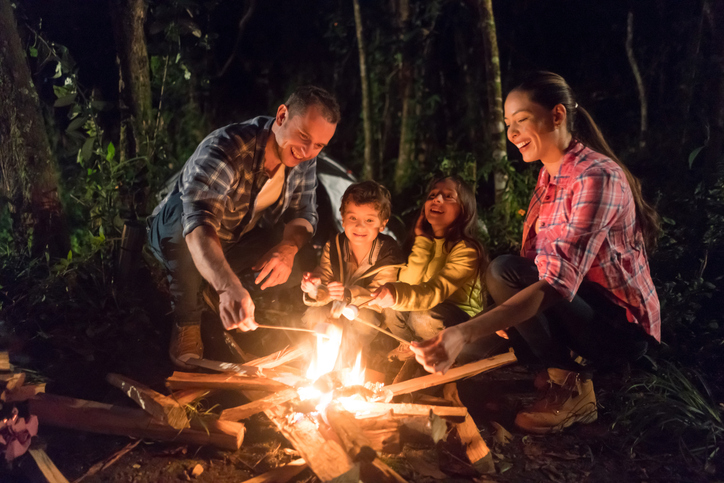Taking kids camping for the first time is both exciting and daunting. As a dad who recently tackled this adventure, I learned a lot—some things the hard way! Camping with kids isn’t just about pitching a tent; it’s an experience that can create lasting memories (and a few funny stories). Here’s what I learned and how I survived that first trip into the great outdoors with my little adventurers.
Why Camping with Kids is Worth It
Before diving into the nitty-gritty survival tips, let me say this: taking your kids camping is one of the best things you’ll ever do.
- Bonding time: Away from screens and distractions, there’s nothing like sitting around a campfire and just talking or laughing with your kids.
- Teaching life skills: Whether it’s learning to toast marshmallows or how to skip rocks, camping is packed with teachable moments.
- Unplugged adventure: The outdoors have a way of captivating kids. Watching them marvel at a butterfly or a starry sky is pure magic.
That said, there are challenges. Let’s break down how to make it all work.
Step 1: Choose the Right Location
Not all camping spots are created equal, especially when you have kids.
- Start close to home: For the first trip, pick somewhere within a couple of hours’ drive. If things go sideways (meltdowns, bad weather, forgotten gear), you’ll be grateful for an easy escape route.
- Look for family-friendly amenities: Campgrounds with bathrooms, running water, and picnic tables are a lifesaver. Bonus points if there’s a playground or hiking trails designed for little legs.
- Avoid overly remote spots: While “roughing it” sounds adventurous, it’s better to save the no-bathroom, no-electricity excursions for when the kids are older.
We chose a state park that had clean bathrooms, a lake for swimming, and flat campsites—perfect for beginners.
Step 2: Gear Up Wisely
Packing for a camping trip with kids is a science. Overpack, and you’ll feel like a pack mule. Underpack, and you’ll regret it at 3 a.m. when someone’s cold, wet, or hungry.
Here’s what worked for us:
- A family-sized tent: Bigger is better. Kids like having space to move around, and you’ll appreciate not being elbowed in the ribs all night.
- Sleeping bags and padding: Don’t skimp here. I brought foam sleeping pads for insulation and comfort, which made a huge difference.
- A portable high chair (if you have toddlers): This was a game-changer for keeping my energetic 2-year-old in one spot during meals.
- Kid-sized backpacks: Let them carry their own flashlights, snacks, and water. It gives them a sense of responsibility (and lightens your load).
- Plenty of layers: Weather can be unpredictable. We packed lightweight jackets and extra socks, which came in handy when temperatures dropped unexpectedly.
- First-aid kit: Scrapes and bug bites happen. Having bandages, antiseptic wipes, and kid-friendly bug spray isessential.
Step 3: Involve the Kids in Planning
Part of the fun is getting your kids excited before you even leave home.
- Let them choose activities: Whether it’s fishing, hiking, or roasting marshmallows, ask them what they’re most excited about.
- Do a backyard campout first: This mini-test run helps them get comfortable with sleeping in a tent and gives you a chance to troubleshoot any issues.
- Pack together: Let them pick their favorite stuffed animal or blanket to bring along. A little familiarity goes a long way.
My 6-year-old loved helping me “check off” items on our packing list, while my toddler insisted on bringing three toy trucks (which promptly got covered in dirt—but hey, he was entertained).
Step 4: Keep Meals Simple (But Fun)
Cooking while camping can feel overwhelming if you overcomplicate it. Stick to easy, kid-approved meals.
- Breakfast ideas: Instant oatmeal, fruit, and granola bars are quick and mess-free.
- Lunch/dinner staples: Hot dogs, sandwiches, and foil-packet meals are lifesavers. For the latter, just toss veggies, pre-cooked chicken, and seasoning into aluminum foil, throw it on the grill, and voilà!
- Snacks galore: Pack more snacks than you think you’ll need. Trail mix, crackers, and apples kept my kids happy between meals.
- S’mores, of course: This was a highlight for my kids. Just be prepared for sticky faces and chocolatey hands.
Pro tip: Bring a cooler with plenty of ice packs to keep everything fresh. And don’t forget extra water bottles for everyone!
Step 5: Be Ready to Adjust Your Schedule
If you’re like me, you might have grand visions of starting the day with a sunrise hike, followed by fishing, swimming, and educational nature talks. Reality check: kids don’t always stick to plans.
- Expect slower mornings: My kids woke up groggy and needed time to adjust (and eat breakfast) before we started exploring.
- Take breaks often: Kids get tired faster than adults. Bring along a lightweight folding chair or blanket for quick rest stops.
- Follow their lead: If they’re fascinated by a stick, a bug, or a pile of rocks, let them explore. Sometimes the unplanned moments are the most memorable.
By the second day, I realized it was better to go with the flow rather than sticking to a rigid itinerary.
Step 6: Handle Challenges with Humor
Camping with kids isn’t all sunshine and laughter—there will be hiccups.
- The unexpected happens: Our campfire wouldn’t light the first night, so we ended up eating cold sandwiches. My kids thought it was hilarious, and it became a running joke the rest of the trip.
- Keep calm during meltdowns: When my toddler got overtired, we took a quiet “time-out” back in the tent. A quick nap turned his mood around.
- Embrace the mess: Dirt is inevitable. Let go of trying to keep everything clean and just enjoy the chaos.
The key is to laugh it off. These moments often turn into the funniest and most cherished memories later.
Step 7: End on a High Note
Wrap up your camping trip with something special to leave a lasting impression.
- Campfire stories: On our last night, we made up silly stories about forest animals. My kids were giggling nonstop.
- A goodbye activity: Before leaving, we took a short hike to a nearby overlook for one last adventure. Ending with a fun activity makes the trip feel complete.
- Celebrate small victories: On the drive home, we talked about our favorite parts of the trip and gave “awards” (Best Marshmallow Roaster, Champion Rock Skipper, etc.).
Final Thoughts
Camping with kids for the first time is an adventure you’ll never forget. It takes patience, planning, and a good sense of humor, but the rewards are priceless. Watching your kids discover the wonders of nature is worth every mosquito bite and sleepless night.
So, to all the dads out there gearing up for their first camping trip with kids, I say: go for it. It won’t be perfect, but it will be unforgettable. And who knows? You might just end up loving it as much as they do.


